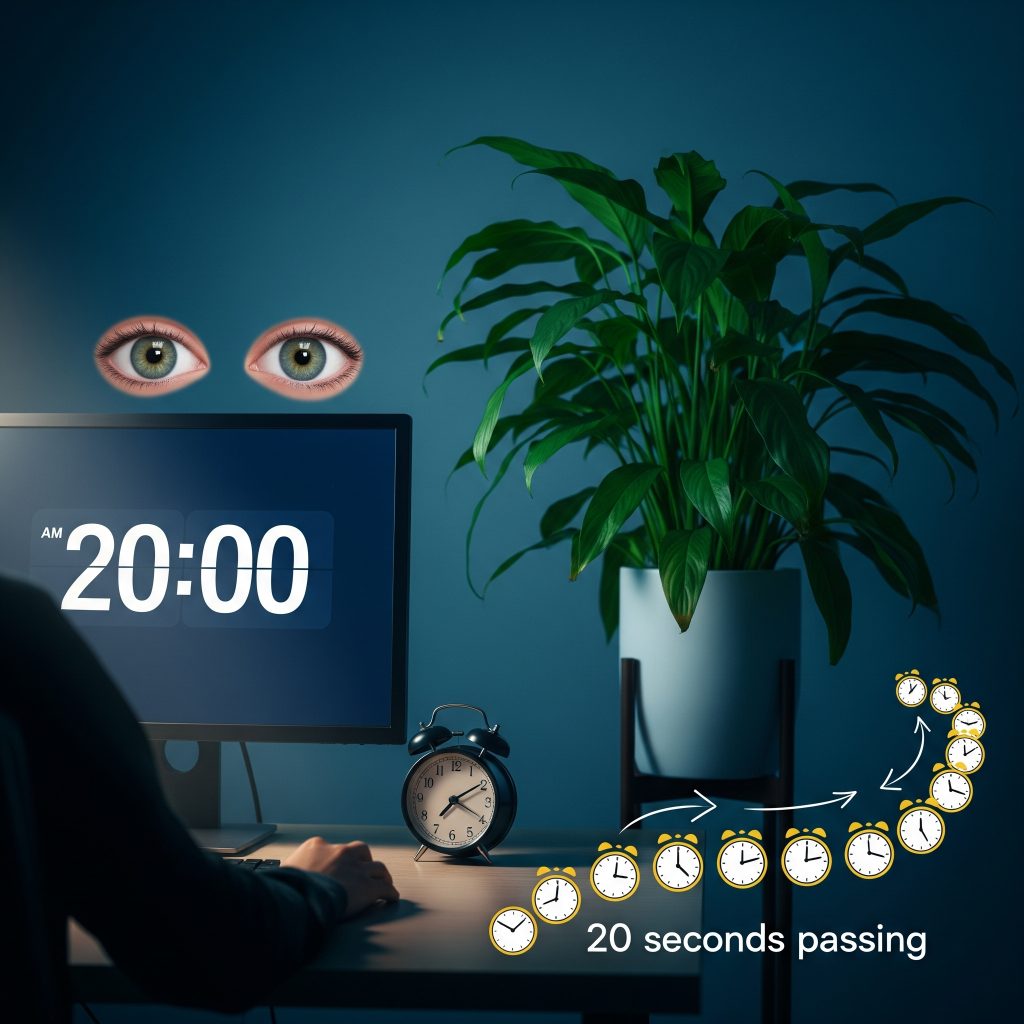
Simple Hacks: The 20 20 20 Rule for Digital Eye Strain
Digital eye strain, also known as computer vision syndrome, is a widespread issue in our screen focused world. Spending hours on devices often leads to symptoms like tiredness, dryness, headaches, blurred vision, and light sensitivity. These discomforts arise when our eye muscles are overtaxed by prolonged close up focus, contributing to both internal and surface level strain.
A popular practice to counteract this strain is the 20 20 20 rule. It encourages taking a 20 second break every 20 minutes and focusing on something about 20 feet away. This method helps relax the eye muscles responsible for close work and refreshes visual focus.
Research supports the effectiveness of this simple routine. Studies have found that using reminders based on the 20 20 20 rule significantly reduces symptoms of digital eye strain and dry eye, though measurable improvements in binocular vision may be more limited in the short term. Many health experts also highlight meaningful relief in comfort and tear film stability when the rule is practiced consistently.
Eye care professionals endorse the rule as a user friendly preventive tool. Although research varies on its long term impact on eye performance, the consensus is clear that any break from continuous screen focus offers noticeable benefits.
To make this rule part of daily life, set timers or use reminder apps. When the break arrives, look at a distant object such as a tree outside or a point across the room for about 20 seconds. Pair this practice with other habits like maintaining a comfortable screen distance, reducing glare, blinking frequently to keep eyes moist, and ensuring proper lighting.
At Findlay Creek Eye Clinic, we recommend the 20 20 20 rule as a practical and effective first step in protecting your eyes during prolonged screen use. If symptoms continue despite regular breaks and ergonomic adjustments, scheduling an eye exam can help identify whether vision correction or specialized support is needed. Your eye comfort matters, and small habits can make a big difference.